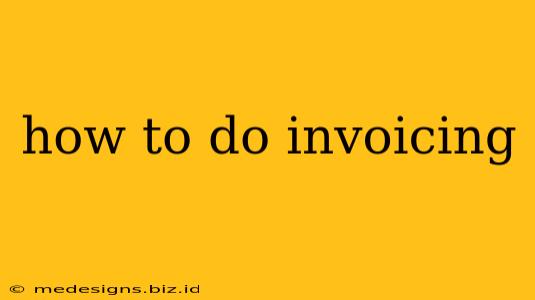Creating professional invoices is crucial for getting paid on time and maintaining a positive business image. This comprehensive guide covers everything you need to know about invoicing, from the basics to advanced strategies. Whether you're a freelancer, small business owner, or entrepreneur, mastering invoicing is essential for financial success.
Understanding the Basics of Invoicing
Before diving into the specifics, let's establish a clear understanding of what an invoice is and why it's so important. An invoice is a formal request for payment for goods or services provided. It's a legally binding document that outlines the details of a transaction, ensuring clarity and facilitating efficient payment processing.
Key Components of a Professional Invoice:
- Your Business Information: Include your company name, address, phone number, email address, and tax ID (if applicable).
- Client Information: Accurately record your client's name, address, and contact information.
- Invoice Number: Assign a unique number to each invoice for easy tracking and reference.
- Invoice Date: Clearly state the date the invoice was issued.
- Due Date: Specify the date payment is expected.
- Description of Goods or Services: Detail the items or services provided, including quantities and rates. Be clear and specific to avoid confusion.
- Total Amount Due: Calculate the total amount owed, including any applicable taxes.
- Payment Terms: Outline your preferred payment methods (e.g., bank transfer, credit card, PayPal).
- Your Payment Details: Provide your bank account information or other relevant payment details.
Choosing the Right Invoicing Method
There are several ways to create and manage invoices, each with its own advantages and disadvantages.
1. Manual Invoicing:
This traditional method involves creating invoices using word processing software like Microsoft Word or Google Docs. It's simple for those with few invoices, but can become time-consuming and error-prone as your business grows.
2. Spreadsheet Software (e.g., Excel, Google Sheets):
Spreadsheets offer a more organized approach than manual invoicing. You can create templates and formulas to automate calculations, but it still lacks the features of dedicated invoicing software.
3. Invoicing Software:
Dedicated invoicing software provides a comprehensive solution, automating many aspects of the process, including:
- Invoice creation and customization: Easily create professional-looking invoices with customizable templates.
- Automated payment reminders: Reduce late payments by sending automated reminders.
- Expense tracking: Track expenses related to each invoice.
- Reporting and analytics: Gain insights into your cash flow and payment patterns.
- Integration with other business tools: Seamlessly integrate with accounting software and other platforms.
Many excellent invoicing software options are available, catering to different business needs and budgets. Research different options to find the best fit for your business.
Tips for Creating Effective Invoices:
- Use a professional template: Choose a clean and easy-to-read template to maintain a professional image.
- Be clear and concise: Avoid jargon and ambiguity. Clearly state all relevant information.
- Include all necessary details: Ensure you include all the key components mentioned above.
- Send invoices promptly: Send invoices as soon as goods or services are delivered to ensure timely payments.
- Follow up on overdue payments: Send polite reminders to clients with overdue payments.
- Maintain accurate records: Keep copies of all invoices for your records.
Beyond the Basics: Advanced Invoicing Strategies
As your business scales, consider these advanced strategies:
- Recurring Invoices: Automate invoicing for recurring services like subscriptions or monthly retainers.
- Customizable payment terms: Offer flexible payment options to cater to different client needs.
- Integrate with accounting software: Streamline your accounting process by integrating your invoicing software with your accounting software.
- Utilize online payment gateways: Make it easy for clients to pay online using secure payment gateways.
By implementing these strategies and mastering the art of invoicing, you can significantly improve your cash flow and maintain a healthy financial foundation for your business. Remember, consistent and professional invoicing is a key element of a successful business.
